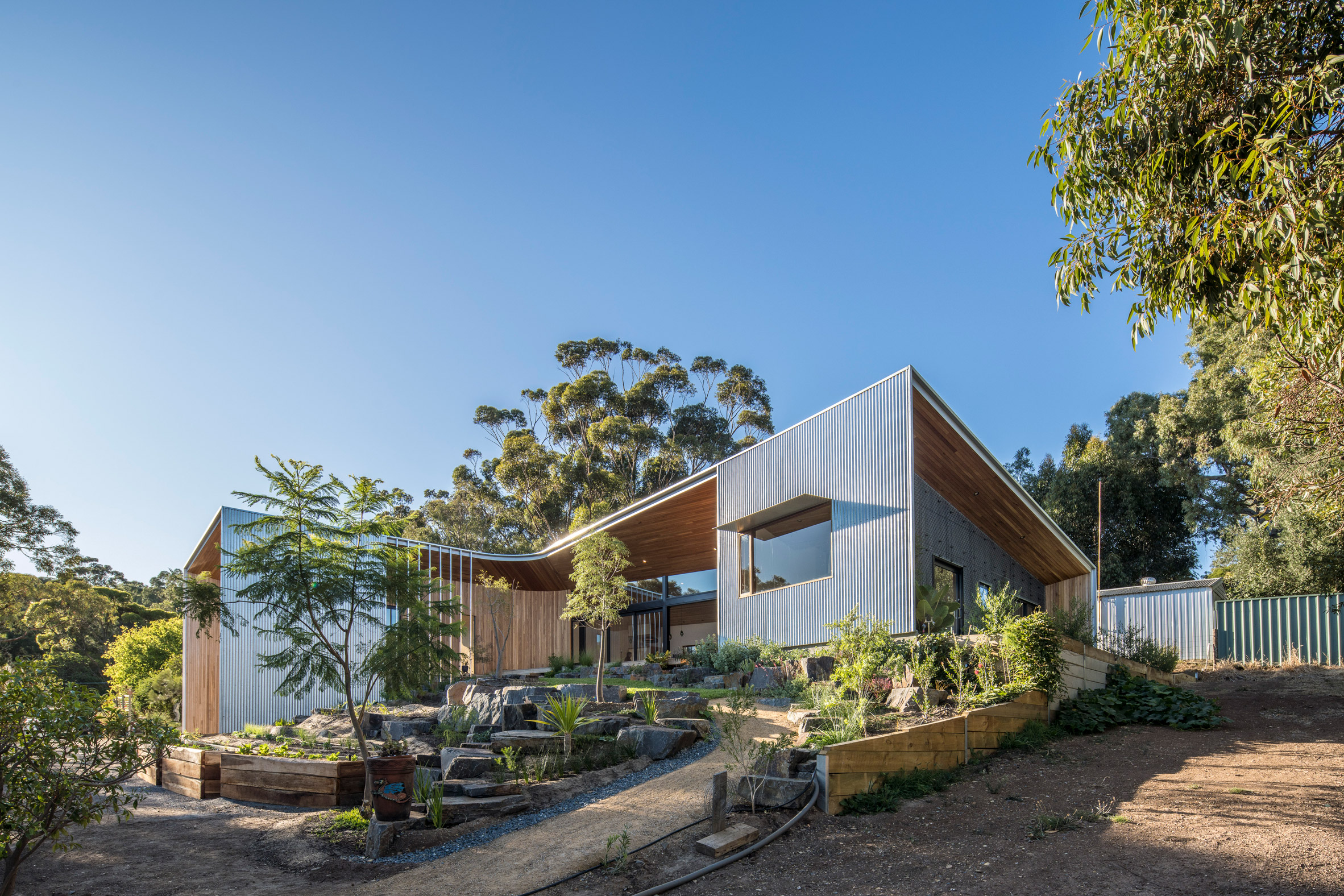
04 Jan A Unique Retirement Home That Embraces Nature
Situated in South Australia’s cosmopolitan coastal capital city of Adelaide, is the Willunga House. The conception of this garden retirement home is from the creative mind of architect-in-training Reuben French-Kennedy for his parents. For French-Kennedy the challenge was “to create a home which successfully met the brief and all functional requirements, and adopted passive design techniques whilst achieving its own expressive architectural identity” he explains.
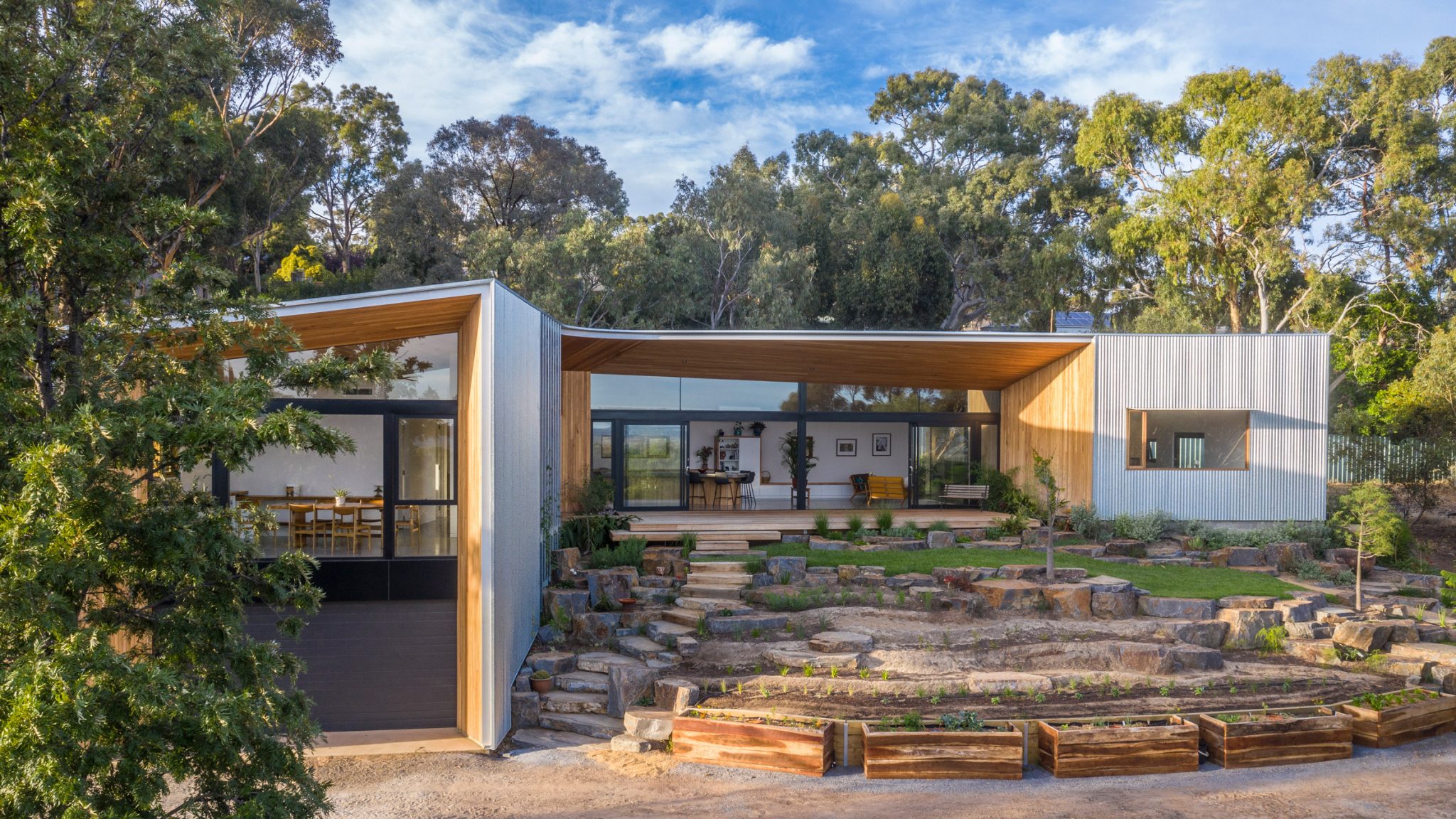
The 2,045 square feet (190 square meters) structure is L-shaped in plan, wrapping the rear and side of the nearly rectangular site. It is distributed over a single story, apart from a garage slotted underneath one section of the building. It is designed to create symmetry with the surrounding nature, providing an excellent panorama of the sweeping landscapes while still minimizing its ecological impact on the general environment. The form and layout were also conceived with elements to make it more accessible for the couple as they entered later years in life without eliminating the easiness and pleasurable aspects of the home.
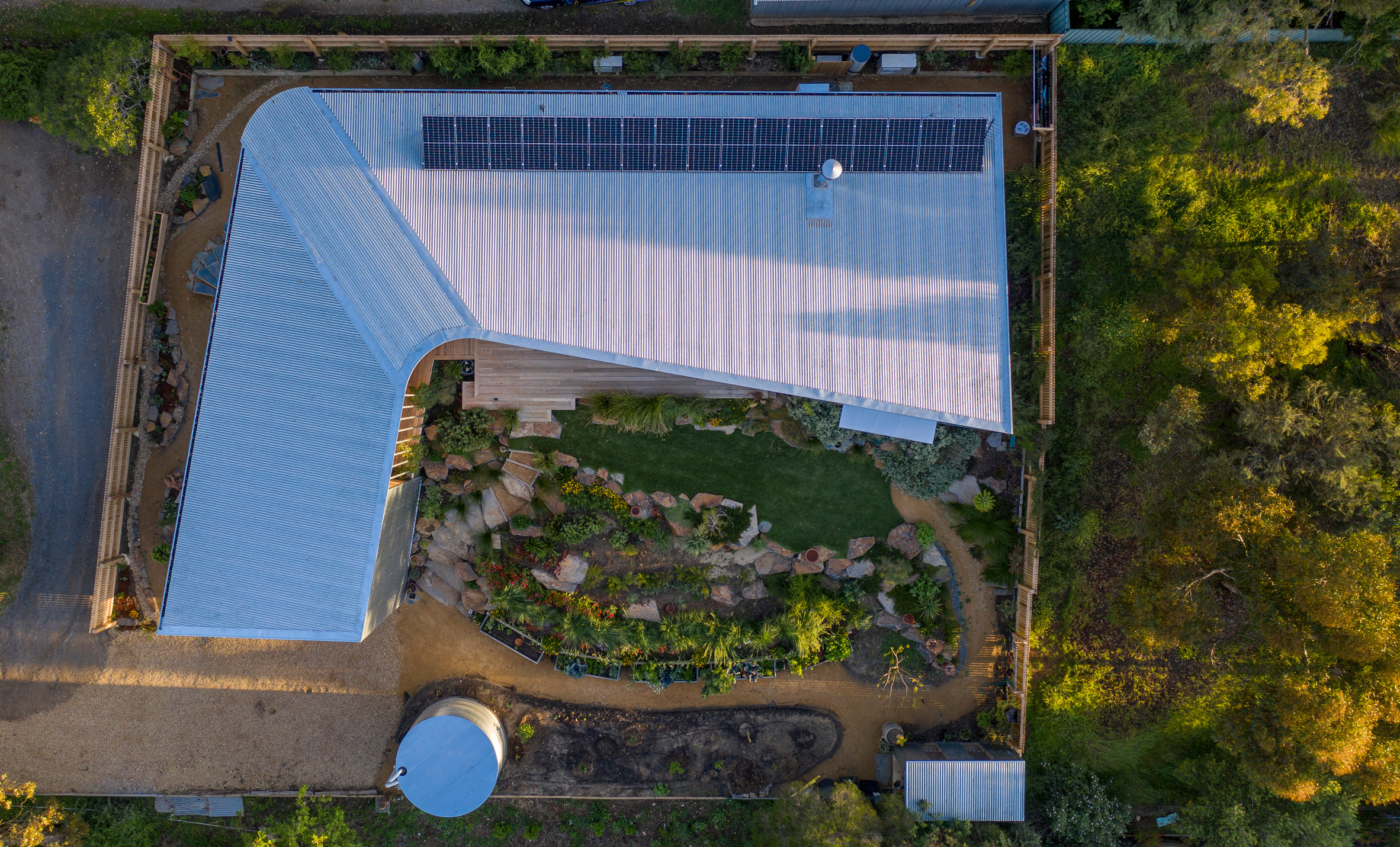
To accomplish these varying elements, windows played a major role in the design work. By situating the building to the rear of the site, French-Kennedy could create a spacious garden in front. The front elevation could then become a window wall, looking out over the garden to the scenery beyond. The designer comments on why this was so advantageous: “By strategically perching the building within the hillside, we were able to sit high enough in the landscape to capture the views, but low enough to avoid a balustrade on the deck, enabling an uninterrupted view from the kitchen and living space.”
The versatility of the wall is highlighted by the fact that it does not just serve the purpose of offering an amazing view, but it also absorbs the heat from the sun, gently warming the interior during the cooler winter months. In the warmer summertime, the house avoids overheating with the design of large eaves that provide shade when the sun reaches a certain height in the sky.
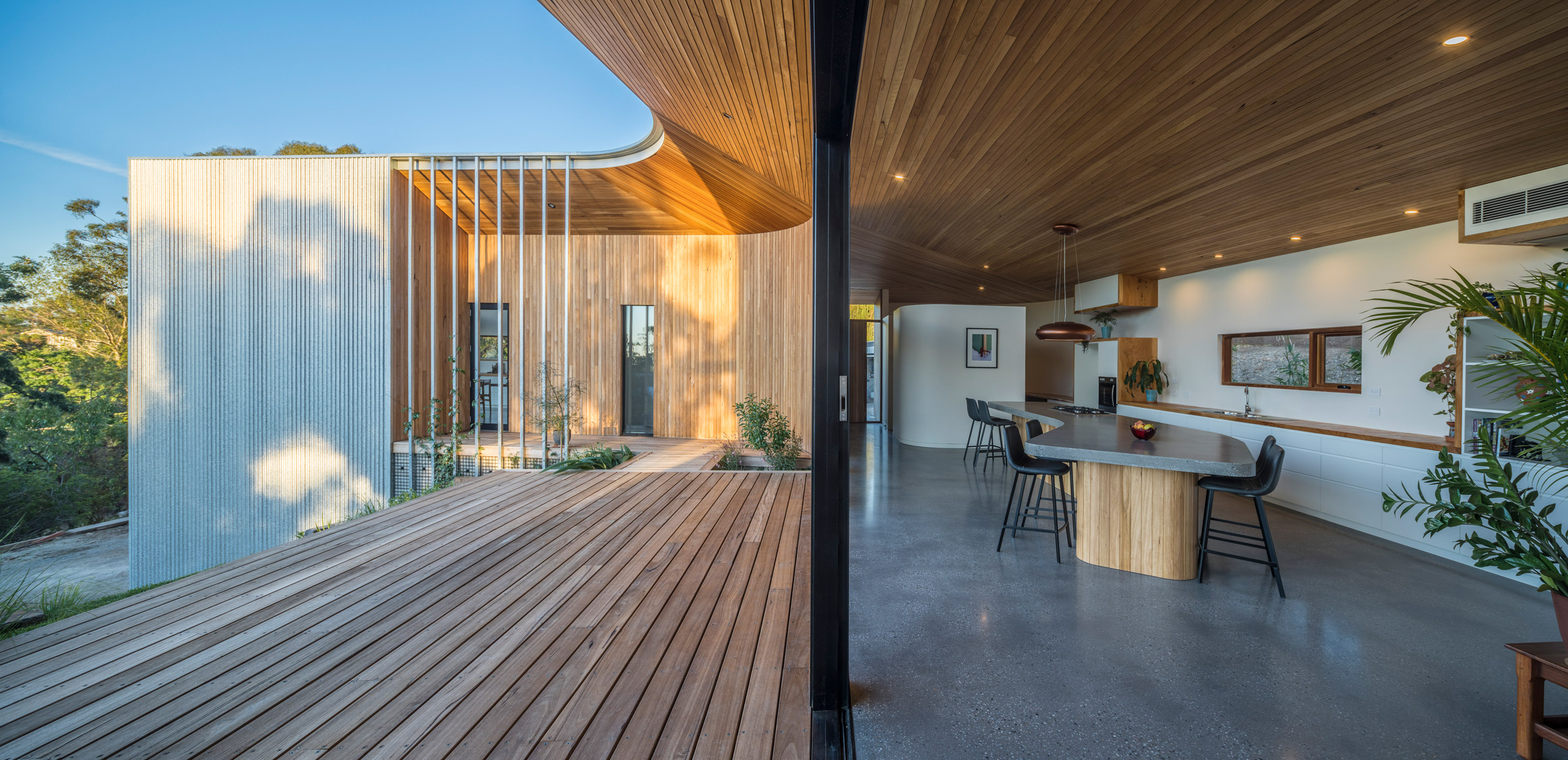
The living spaces open out to a terrace with a window wall.
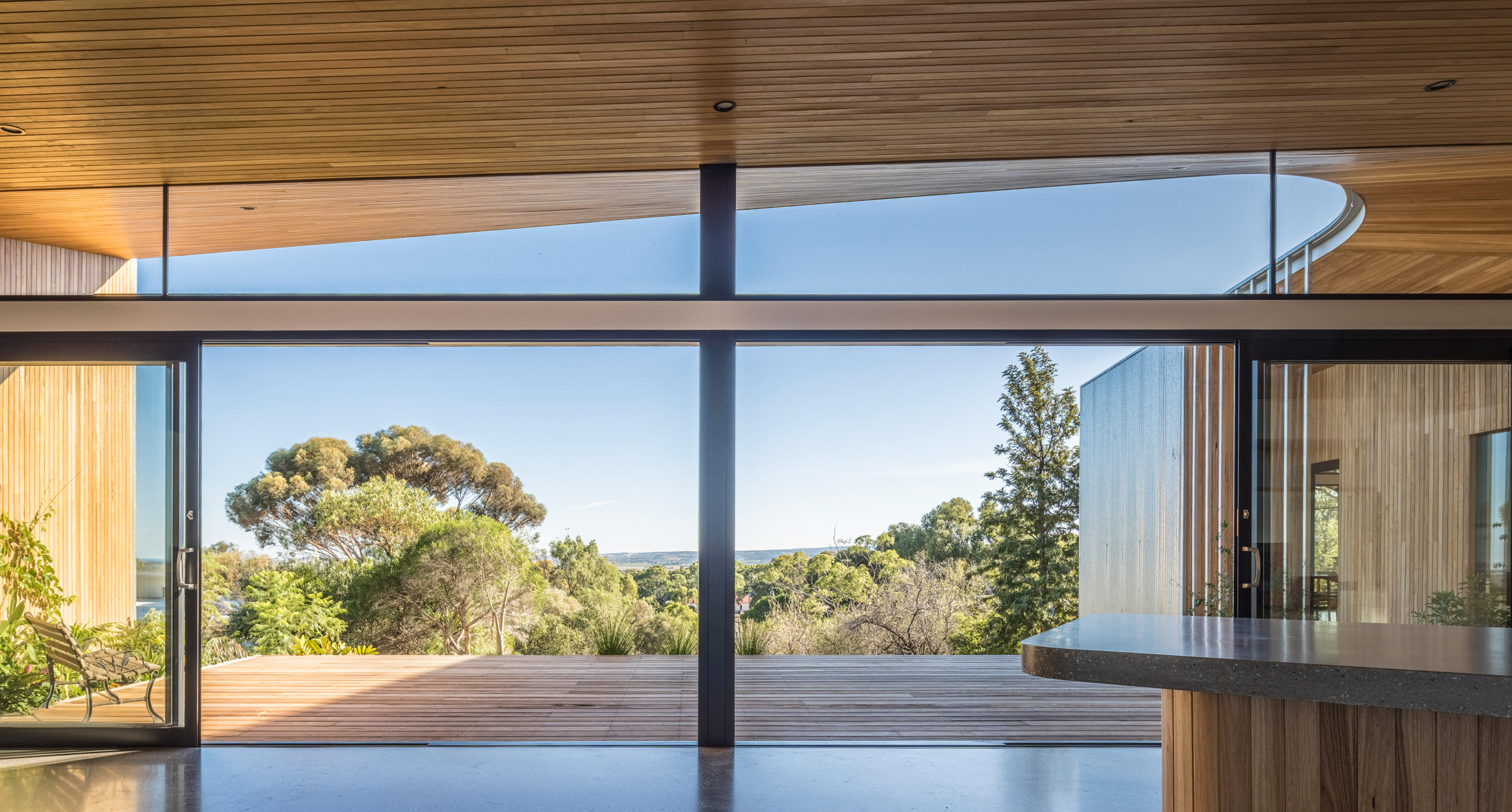
The window wall provides an uninterrupted view of the scenery
A mix of open-plan spaces and private rooms compose the interior of the Willunga House, intended to suit the couple’s needs both now and in the future. The central section of the house unites the kitchen, dining area, and lounge, with a study space located in a partially screened area on one side. At the western end of the home, in a more private area, the master bedroom is comfortably situated. Also, there is a guest bedroom, which can later be transformed into a room for a live-in caretaker, and a separate studio that can double as a workspace or as a living room.
Absorbing the organic elements of the landscape, French-Kenndey selected to use a simple palette of materials for both inside and outside surfaces. Galvanised metal creates a weather-proof skin around the exterior, while the terraces and interior spaces are lined with ash wood. The floor is polished concrete, warmed by an underfloor heating system that is powered by rooftop solar panels and a hydronic heat pump. These material details are consistent in the fittings. The kitchen island has the same concrete aggregate as the floor, while countertops are made from wood.

“The building form is bold and contemporary, it is softened by the humble materiality of corrugated iron and timber, taking cues from an Australian building vernacular..”
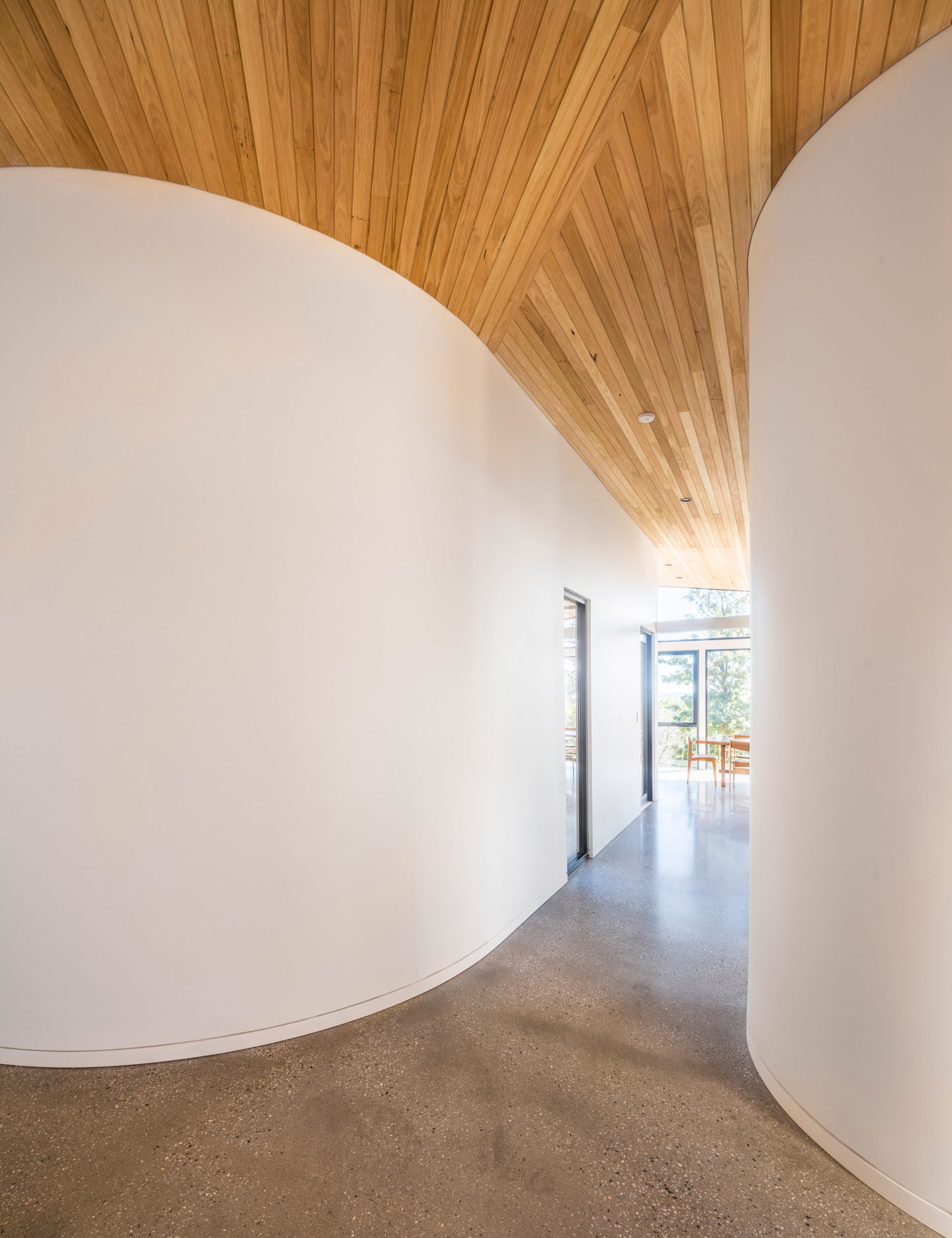
Curved walls frame a guest bedroom and studio space



